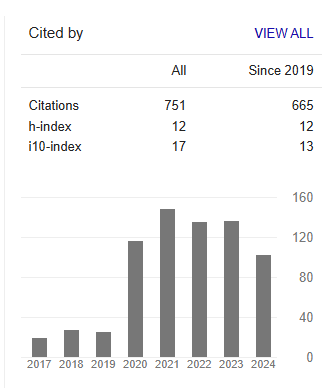Impact of the Introduction of Artesunate on the Management of Severe Malaria in Casamance (Senegal): A Comparative Analysis of Data From 2016 and 2020
Abstract
Kalilou Diallo, Paulin Sambou, Jean Christoph Dionou, Yaya Kane, Abdoulaye Diop, Khadidiatou Diallo, Mame Ngoné Coly, Habibou Sarr, Abdou Badiane, Ludmillie Annie Badji, Ansoumana Diatta and Noel Magloire Manga
Background: the implementation of different control strategies, including the treatment of severe forms with injectable artesunate, has made it possible to significantly reduce malaria in Senegal. Despite everything, malaria remains a concern in Senegal, especially in the southern regions, hence the interest in studying these characteristics and their evolution over time.
Objectives: describe the epidemiological, clinical and evolving aspects of severe malaria before and after implementation of artesunate treatment.
Patients and methods: retrospective, cross-sectional, descriptive and analytical study focusing on cases of severe malaria admitted in two health structures in the Vélingara district in 2016 and 2020. The severity of diagnosis was made based on the current criteria of the WHO and confirmation made by thick blood smear and/or HRP2 rapid diagnostic test. The data was entered into Excel and analyzed with Epi-info version 7.2.6.
Results: In 2016, 357 cases of serious malaria were recorded from January 1st to December 31st, with 75.6% in October and December. The average age is 16.2 ± 12.9 years, with a predominance of the age group 6-15 years (38,94%). There was a male predominance and the sex ratio was 1.01. Coma (57%), convulsions (34%) and jaundice (14%) were the most common signs of severity. Under treatment with quinine salts (97%) and artemether (3%), the lethality was 5%. Factors significantly associated with death were rural origin (p:0.009), coma (p:0.000), hepatomegaly (p:0.03) and diffuse hemorrhages (p:0.03).
In 2020, 456 cases were collected from July 1st to December 31st, with 75.44% in October and November. The average age was 15.38±15.36 years (1 to 85 years) with a predominance of age group 6 to 15 years (46.49%). There was a male predominance and the sex ratio was 1.06. The signs of severity were dominated by prostration (52.63%), repeated convulsions (17.11%), coma (7.9%) and jaundice (7.2%). All patients were treated with injectable artesunate with a lethality of 3.5%. Death was significantly associated with coma (p:0.000) and the occurrence of respiratory failure (p:0.000).
Conclusion: severe malaria remained a childhood pathology with neurological manifestations predominating in Vellingara. A drop in lethality is observed with the generalization of artesunate-based treatment.



